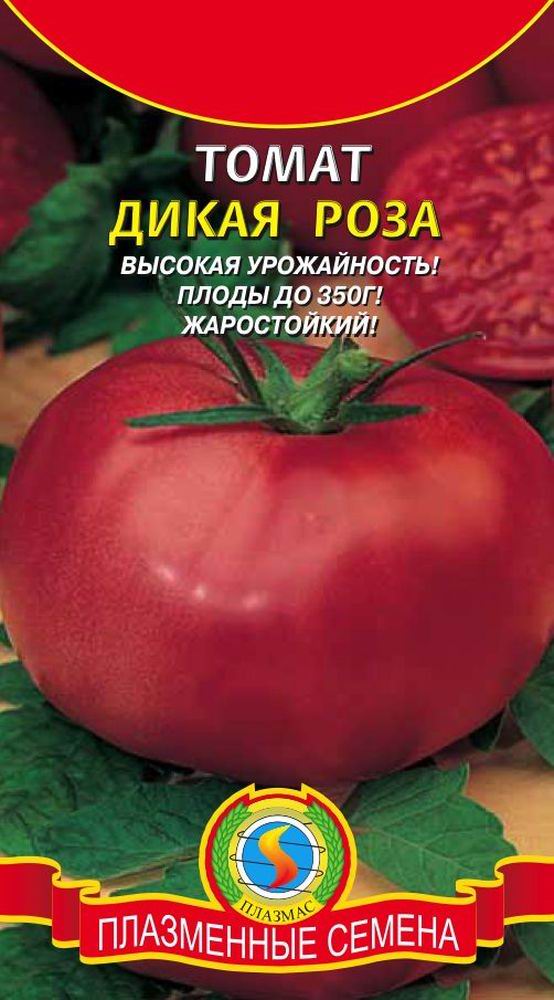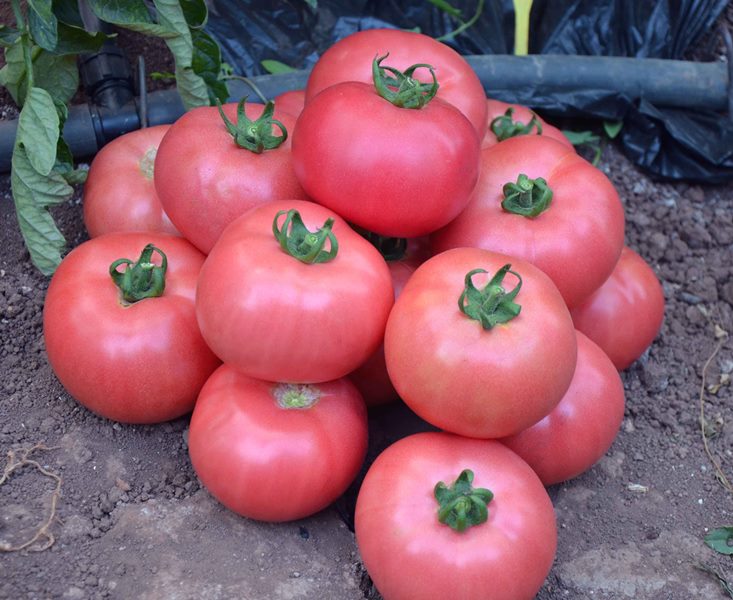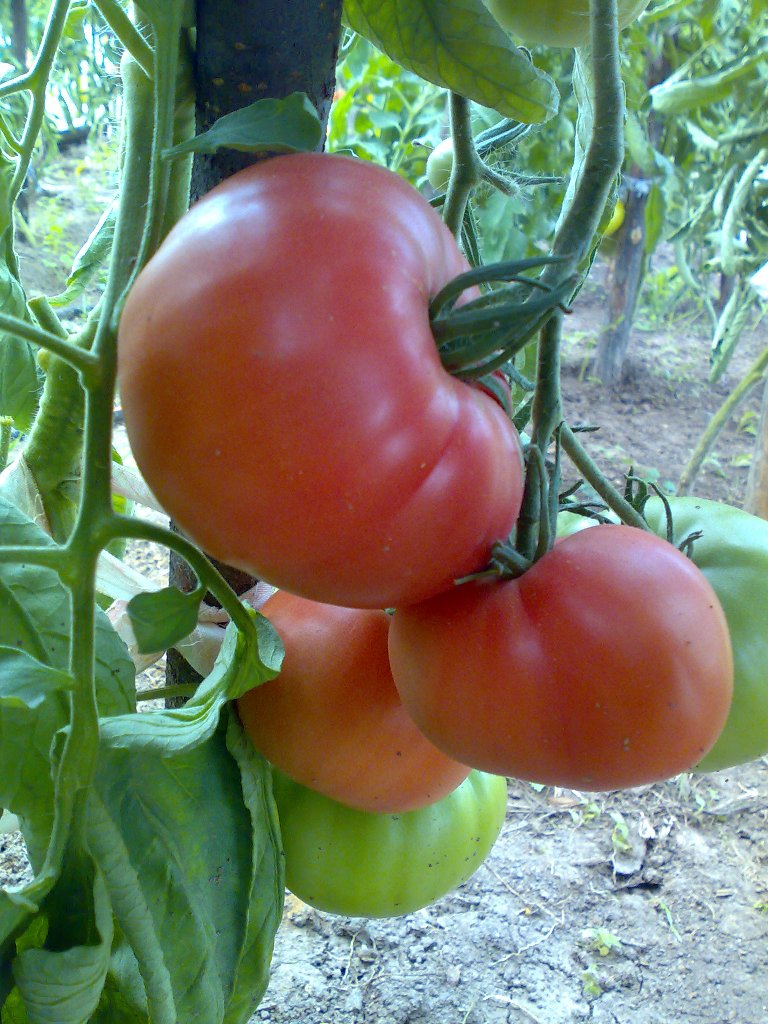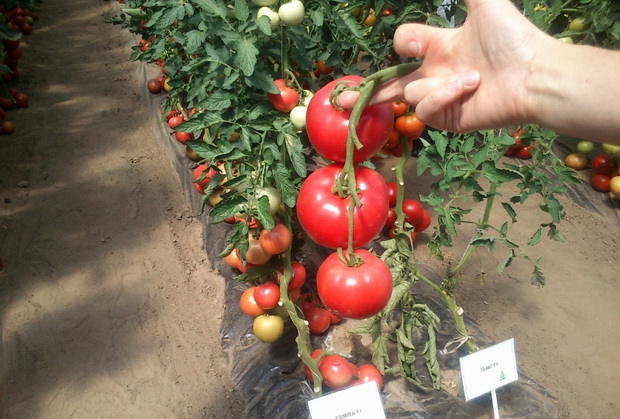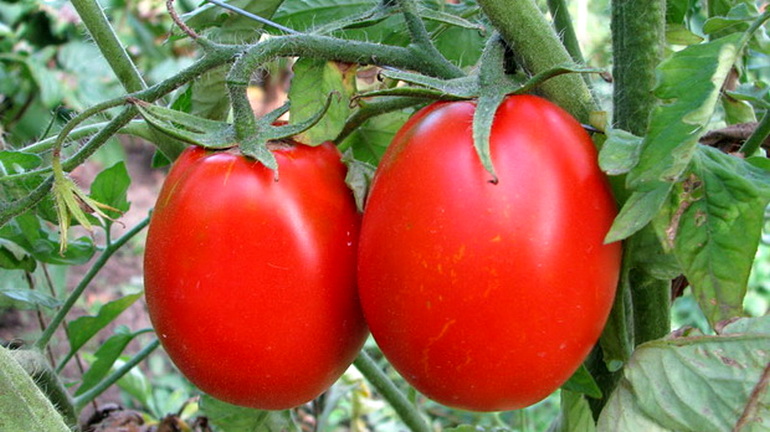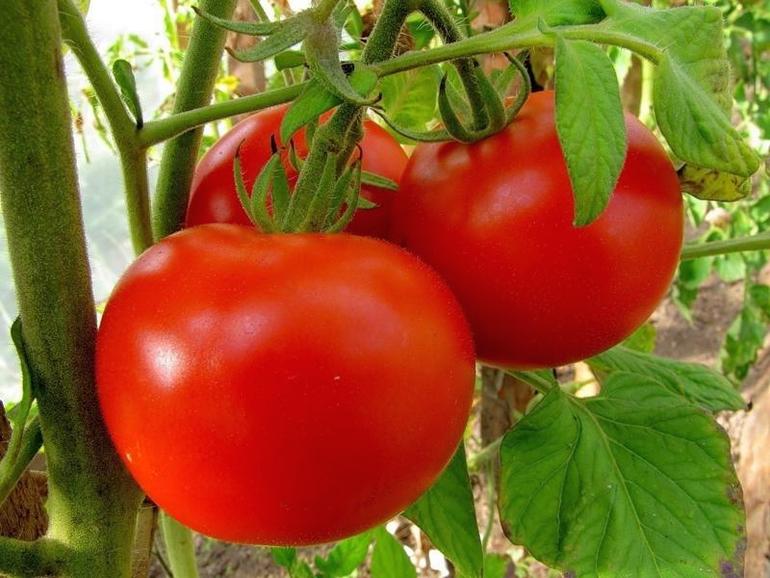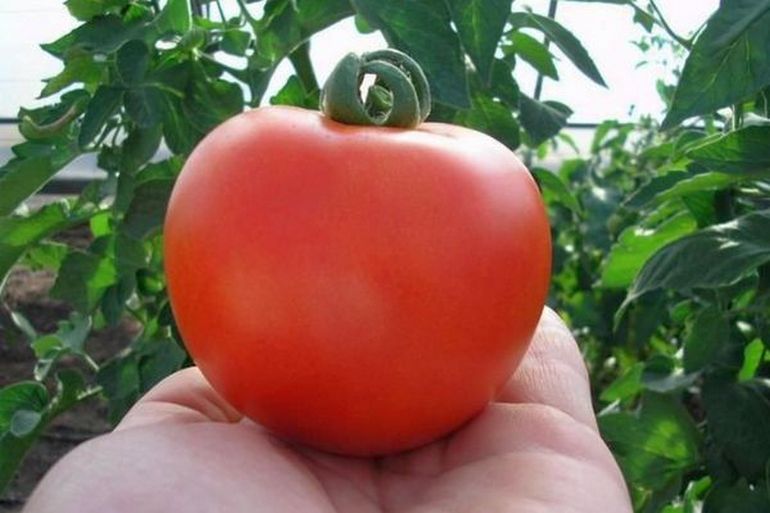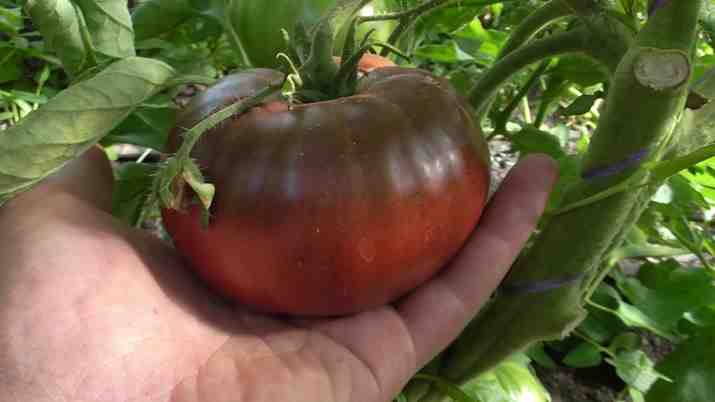Content:
A tomato variety with the exquisite name Wild Rose was bred by Russian breeders about 20 years ago. The time period is quite sufficient for both specialists and simply amateurs to pay tribute not only to the taste and agrotechnical characteristics of this species, but also to note its shortcomings. By the way, the Wild Rose tomato is included in the Russian State Register of Breeding Achievements, which means that you should definitely pay attention to it.
Characteristics and description of the variety
Luxurious pink tomatoes, large, slightly flattened - a distinctive feature of the Wild Rose variety. The fruits are distinguished by a sweet taste, which is especially piquant due to a slight sourness. Due to the fact that pink tomatoes are very tender and fragile, they are unlikely to be suitable for canning, but juices and sauces from them are excellent.
The Wild Rose tomato is a tall (indeterminate) variety with an unlimited growth point. The height of the bush, if conditions are favorable for it, can reach 2.5 meters. With such outstanding data, it is recommended to place it in a greenhouse, although it shows good yields in the south and in the open field. Trellis, a garter are indispensable attributes when growing a tomato Rose, it is necessary to tie and pinch, while forming a bush of 1-2 stems.
The variety is considered medium early, technical maturity occurs in 105-110 days from the appearance of the first shoots. In a state of full ripeness, tomatoes acquire not a red, but a raspberry color, reaching a weight of up to 450 grams. The overall yield is not very high; with proper care, up to 3.5 kg of tomatoes can be obtained from 1 bush. Tomato Rosa is quite resistant to diseases, but still one should not neglect preventive measures.
The fruits ripen perfectly at home. This applies to gardeners who prefer to shoot tomatoes in a state of technical ripeness in order to protect them from late blight.
Growing and care features
Tomatoes are usually grown via seedlings. To obtain strong, healthy seedlings in early March, it is necessary to sow seeds. The ability to grow seedlings in a heated greenhouse is a luxury for most gardeners; they mainly use a window sill for this purpose.
Tomato Wild Rose will also feel good on the window, but you will still have to follow certain agrotechnical techniques:
- Additional lighting. Daylight hours for seedlings should last at least 16 hours, as soon as the first shoots appear, we organize artificial lighting for the "kids";
- Dense plantings. Too frequent shoots should be thinned out, leaving the strongest shoots. Thus, the plant will receive more light, and accordingly, it will develop better;
- Watering rules. Dampness to tomatoes is contraindicated, watering is rare, not more than 1 time per decade, but of high quality;
- Feeding rules. It is necessary to feed the seedlings, but you should not get carried away, especially with nitrogen fertilizers, everything should be in moderation;
- Temperature conditions. Before the seeds hatch, the container must be kept warm, at a temperature of at least + 25 ° C. But as soon as the seedlings have sprung up, it must be reduced to an average of + 15 ° C. This is the key to strong and healthy seedlings.
When the seedlings have 4 real leaves, the seedlings must be dived, that is, they must be resettled in separate containers.By the way, not all gardeners are of the opinion that this procedure is necessary, many believe that the plant will develop better if it is disturbed as little as possible during the growing season, in which case the seeds should be sown immediately in individual containers. Due to the fact that the Rosa tomato is tall, both of these methods are acceptable for him.
To prevent the seedlings from stretching, it is enough to run your hand over it once a day, while a special gas is released, which slows down the growth of the plant. This only applies to tomatoes.
By this time, a strong, healthy plant should be formed, with dark green leaves and a thick stem. If the place of permanent deployment of the Wild Rose tomato is a greenhouse, then it can be transplanted already in early May, if it is planned to plant it in open ground, two weeks later, although it is better to focus on the region here.
Given the impressive growth of the Wild Rose tomato, as well as the abundance of foliage in adulthood, it is necessary to plant plants according to the 60x70cm scheme. It is better to start up immediately after planting on a trellis, so it is more convenient to subsequently carry out pinching, that is, to remove the branches formed in the leaf axils. Parsinking is not shown for all varieties of tomatoes, the Wild Rose definitely needs this procedure, otherwise you can lose the crop. As the fruits begin to set on the brushes, the leaves under them should be ruthlessly removed, this is only good for the tomatoes.
So that the stepsons do not grow back in place of those already removed, it is not necessary to break out the sprout completely, it is necessary to leave a small stump. Moreover, this procedure should be carried out when the stepson is at least 7-10 cm long.
It is necessary to feed during the season, after all, the size of the plant is quite impressive, but often you should not do this, 2 times per season will be quite enough. It is better to use complex fertilizers. In addition, regular loosening of the soil is necessary, if the tomatoes are in the open field, mulching has proven itself well.
Advantages and disadvantages
Having summarized and systematized information about the Wild Rose tomato, its description and characteristics, it is possible to draw comparative conclusions in relation to other varieties.
Benefits:
- Excellent taste, slightly different from other tomato taste;
- Resistance to weather fluctuations, with dignity tolerates both heat and a sharp drop in temperature, up to frost;
- The tobacco mosaic virus is not scary;
- Unlike its hybrid counterparts, it is able to reproduce with its own seed fund;
- Unpretentious, will grow and bear fruit on impoverished soils.
Disadvantages:
- Reviews about productivity are ambiguous, the variety can be attributed to not very productive;
- Many complain about late ripening, although the variety is declared as mid-season.
Summarizing the above, we can conclude that the Wild Rose tomato variety definitely deserves attention. The identified imperfections, by the way, may be the result of just an inattentive attitude to the plant on the part of the owner. The disadvantages also include the impossibility of canning in its natural form, due to its huge size. According to reviews, for some summer residents, the weight of individual fruits reached 900 grams. Reviews about the taste of a tomato are also very diverse: someone praises, someone is not very happy. But “there are no comrades in taste and color,” therefore, you can only form your personal opinion about the Wild Rose tomato with its characteristics and description of the variety by growing it yourself in your summer cottage.
